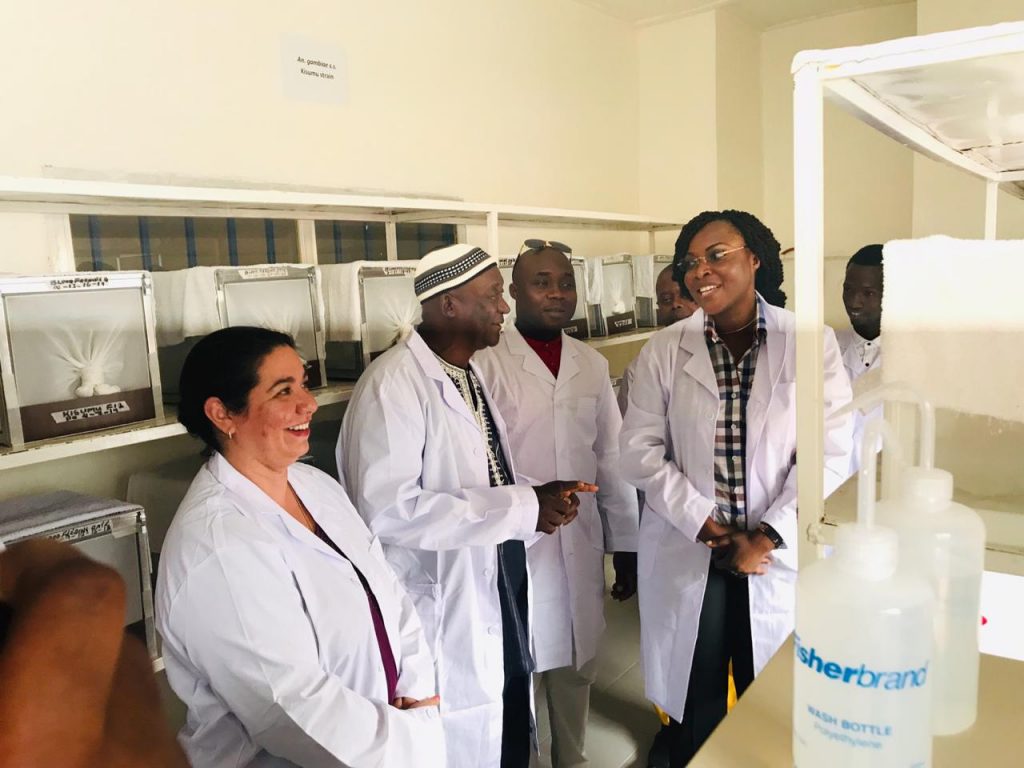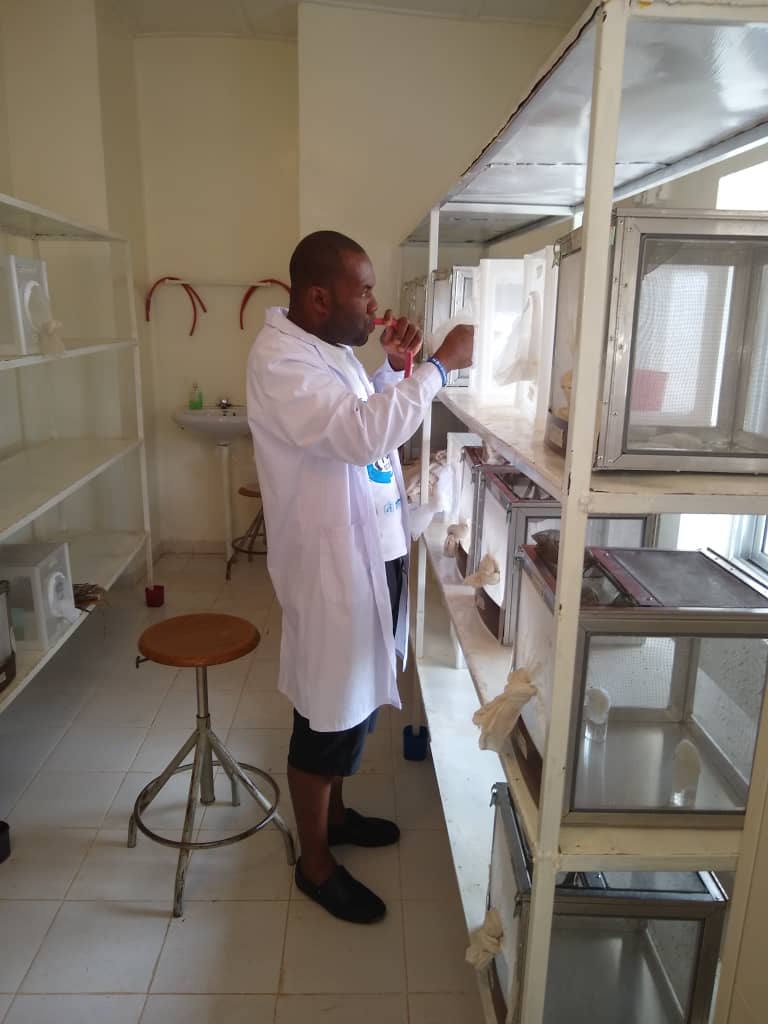A key defense against an infectious disease like malaria is understanding the enemy. The more scientists know about the Anopheles vector – the mosquito that carries the malaria parasite – the better equipped they will be to make decisions about how best to control the mosquito population and manage insecticide resistance.
Sierra Leone has a new tool in this fight: the country’s very first, fully-functional Vector-Borne Disease Insectary and Laboratory (VBDIL). The U.S. President’s Malaria Initiative (PMI) worked in collaboration with Sierra Leone’s National Malaria Control Program (NMCP) and the Neglected Tropical Diseases Program to establish the VBDIL to support entomological monitoring for malaria, and research for other vector-borne diseases.
To protect people from malaria, Sierra Leone currently uses insecticide-treated nets (ITNs) and plans to use indoor residual spraying (IRS). However, the emergence and spread of insecticide resistance pose major challenges for the way the country currently conducts its vector control interventions.
The VBDIL will allow the country’s entomologists to test the resistance of Anopheles mosquitoes to insecticides. Being able to assess the effectiveness of potential vector control interventions will help the country make strategic programmatic decisions – like where and when to conduct indoor residual spraying or deploy new types of insecticide-treated nets. With the VBDIL in place, Sierra Leone will also be able to undertake most of the entomological activities themselves without having to rely on data from other countries.
To build further entomological skills in Sierra Leone, PMI trained members from the NMCP, District Health Office, and Ministry of Health on mosquito sampling and identification, insecticide resistance monitoring, and cone bioassay tests. Now, trained staff from the MOH and district offices support the monthly entomological monitoring in four sentinel districts: Bombali, Bo, Kono, and Western Rural area. The insectary and entomology laboratory will also be used by research and academic institutions and will serve as an avenue for building further local capacity in-country.
Since the VBDIL was established, entomologists have reared mosquitoes of the An. gambiae s.s Kisumu strain – the primary mosquito responsible for the transmission of malaria in most of sub-Saharan Africa – making it the first time Sierra Leone has been able to rely on quality vector control tools in-country. Entomologists in-country now use these mosquitoes to assess their susceptibility to the insecticides used in IRS and ITNs.
And it is already paying off: Based on data collected and the results gathered from these susceptibility tests conducted in the VBDIL, the NMCP has advocated for the procurement and 100 percent use of piperonyl butoxide (PBO) nets, for Sierra Leone’s next insecticide-treated net mass campaign set to take place in 2020. PBO nets have been shown to significantly reduce malaria infection in areas with high rates of resistance to other insecticides.


